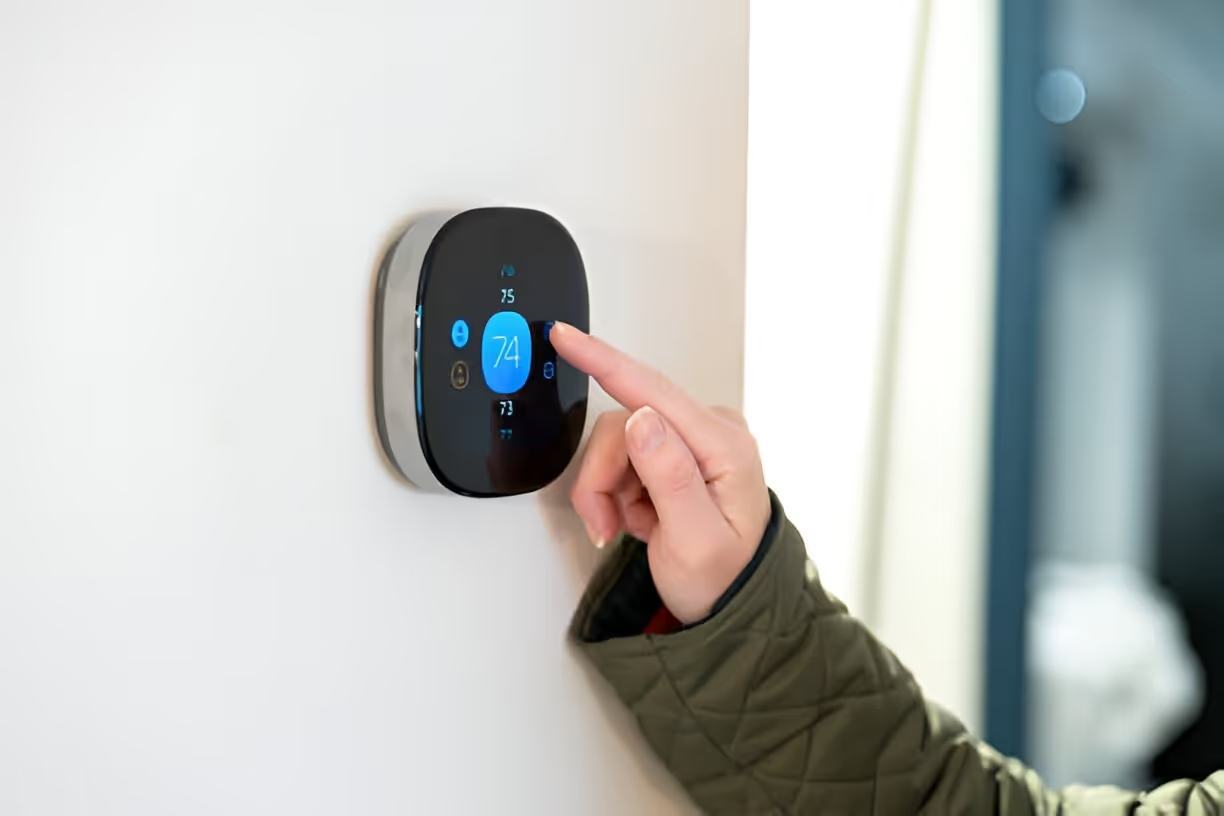Smart Thermostats in Apollo Beach, FL


Why Apollo Beach homeowners choose smart thermostats
- Lower cooling costs in a hot, humid climate where air conditioning is the dominant energy expense
- More consistent comfort and humidity management for coastal homes prone to salt air and moisture
- Remote control and integration with home automation for people spending time away from home or with variable schedules
- Alerts and maintenance reminders that protect expensive HVAC equipment from avoidable wear
Common smart thermostat features
Smart thermostats offer a range of features that matter most in Apollo Beach homes:
- Remote control via smartphone app to adjust temperature from anywhere
- Scheduling for predictable daily routines and automatic setbacks during away hours
- Learning algorithms that create efficient schedules from your behavior (or allow manual scheduling)
- Energy-saving modes that optimize setback and recovery to reduce runtime while maintaining comfort
- Humidity control and dehumidification integration to pair thermostat control with whole-home dehumidifiers or HVAC humidity settings
- Smart home integration with Apple HomeKit, Google Assistant, Amazon Alexa, and many home automation systems
- Multi-sensor support to balance temperature across rooms and reduce hot/cold spots
- Maintenance alerts for filter changes, system faults, and efficiency drops
Common smart thermostat issues in coastal Florida and how they’re addressed
- No C-wire at the thermostat location — many HVAC systems in older homes lack a common wire. Solutions: install a C-wire, use a power extender kit, or select a thermostat model designed for low-power installations.
- Compatibility with heat pumps and multi-stage AC — ensure the chosen thermostat supports your specific system (single-stage, multi-stage, heat pump with aux/backup heat).
- High humidity causing long AC run times — pair thermostat settings with humidity control strategies and sensor placement to avoid overcooling.
- Weak Wi-Fi near the thermostat — consider a Wi-Fi extender or select a thermostat with strong 2.4 GHz support for reliable cloud connectivity.
Compatibility and professional installation steps
A professional assessment ensures correct compatibility and reliable installation:
- System evaluation — technician confirms system type (split system, heat pump, packaged unit), stages of heat/cool, and accessory controls (humidifier, ECM blower).
- Electrical check — verify presence of a C-wire or plan for an adapter/power extender; check transformer capacity.
- Mounting and wiring — remove old thermostat, label and connect wires to the new unit, and securely mount the thermostat on an interior wall away from direct sun or drafts.
- Integration with HVAC — configure stage control, fan operation, and any auxiliary components (dehumidifiers, ventilation, zoning boards).
- Network and account setup — connect the thermostat to Wi‑Fi, create/secure the account, and verify cloud services and firmware are up to date.
- Testing and tuning — verify system responses, set initial schedules, and adjust placement or settings for accurate control and humidity balance.
Professional installation reduces risk of wiring mistakes, ensures heat pump settings and stage logic are correct, and keeps equipment warranty intact. For multi-zone systems, an installer will map sensors and verify zoning controls.
Setup and everyday usage tips
- Use away and eco modes for times when the house is unoccupied to maximize savings.
- Enable geofencing for automatic adjustments when household members leave or return.
- Add remote sensors in bedrooms/living areas to avoid overshooting in one room while trying to cool another.
- Schedule sensible setbacks — in Florida, small setback ranges (2–4°F) often yield savings without uncomfortable recovery times.
- Combine thermostat schedules with humidity-aware settings: avoid setting extremely low temperatures solely to remove humidity; use dedicated dehumidification when available.
- Review weekly energy reports provided by many smart systems to identify opportunities for further savings.
Energy savings and rebates for Apollo Beach homes
Smart thermostats commonly reduce heating and cooling energy use by single-digit to low double-digit percentages. In a cooling-dominant climate like Apollo Beach, efficient scheduling, setback strategy, and demand response features can translate to meaningful annual savings. Actual results depend on home size, insulation, HVAC efficiency, thermostat type, and occupant behavior.
Many Apollo Beach homeowners qualify for utility rebates and incentives that lower the upfront cost. Local energy providers, such as Tampa Electric (TECO), state energy-efficiency programs, and federal incentives occasionally offer rebates for installing qualifying smart thermostats or as part of larger energy-efficiency upgrades. Eligibility and amounts vary over time, so homeowners often see added value when pairing thermostat upgrades with recommended HVAC tune-ups or system improvements.
Security and privacy considerations
Smart thermostats connect to your home network and collect usage data to deliver convenience and efficiency. Key privacy and security practices include:
- Use strong, unique passwords and two-factor authentication when available for your smart thermostat account.
- Keep firmware and app software up to date to protect against security vulnerabilities.
- Segment IoT devices on a separate guest network or VLAN to limit access to your primary devices and data.
- Review privacy settings for data sharing and disable optional analytics if you prefer minimal data collection.
- Ask your installer about local control options — some models support basic local operation without cloud dependency for added privacy.
Ongoing maintenance and support
Routine maintenance ensures long-term benefit:
- Replace filters on the recommended schedule and allow the thermostat to remind you with its filter alert feature.
- Run HVAC preventive maintenance annually to keep the system efficient and responsive.
- Update thermostat firmware when prompted to get feature improvements and security patches.
- For wiring, sensor, or integration issues, professional HVAC technicians provide on-site diagnostics and resolution beyond basic app troubleshooting.
Smart thermostats bring measurable comfort and efficiency benefits to Apollo Beach homes when chosen and installed correctly. With attention to compatibility, humidity control, and security, they are a high-value upgrade for coastal Florida households that depend on reliable, efficient cooling year-round.
Service Areas


